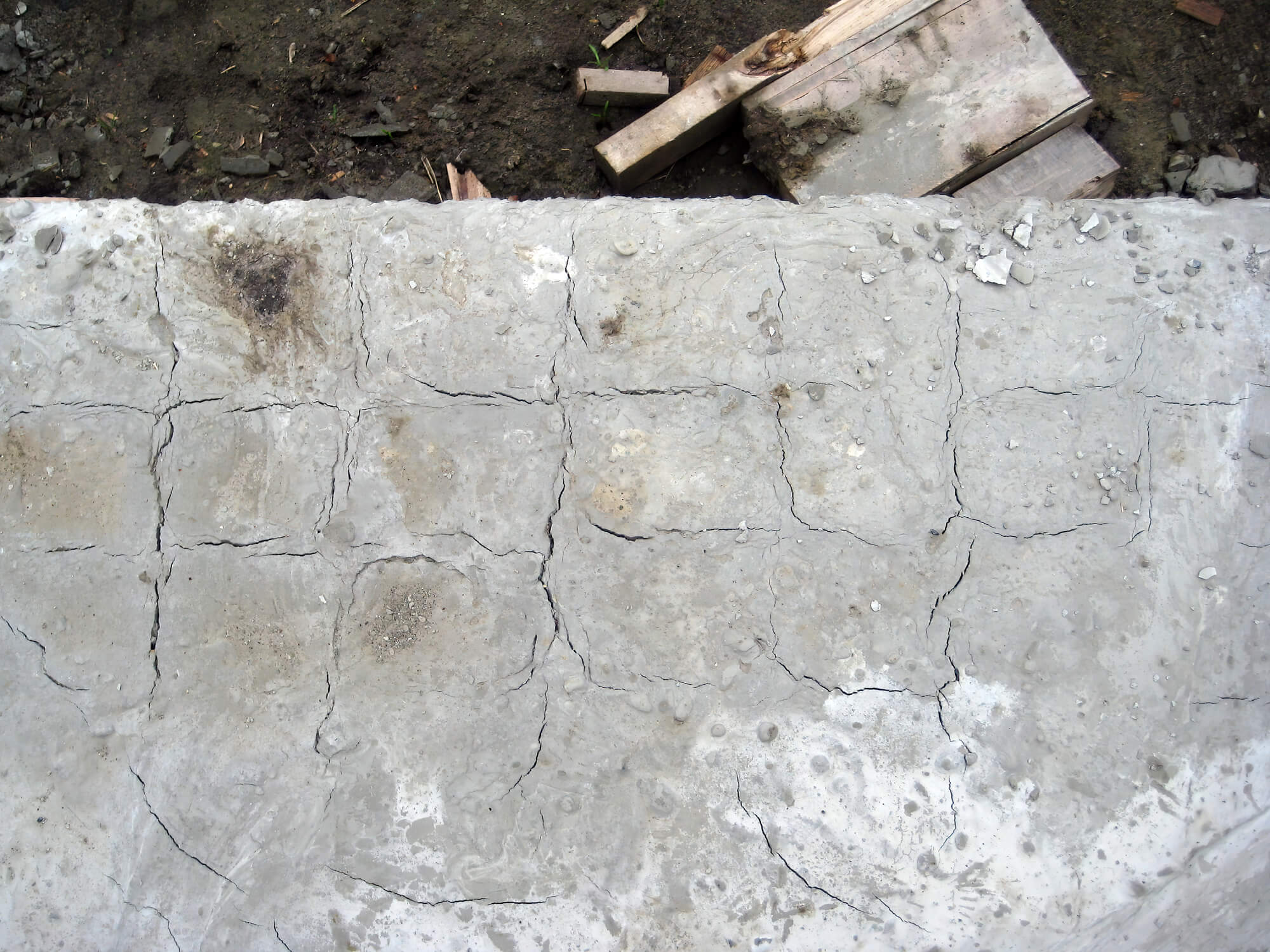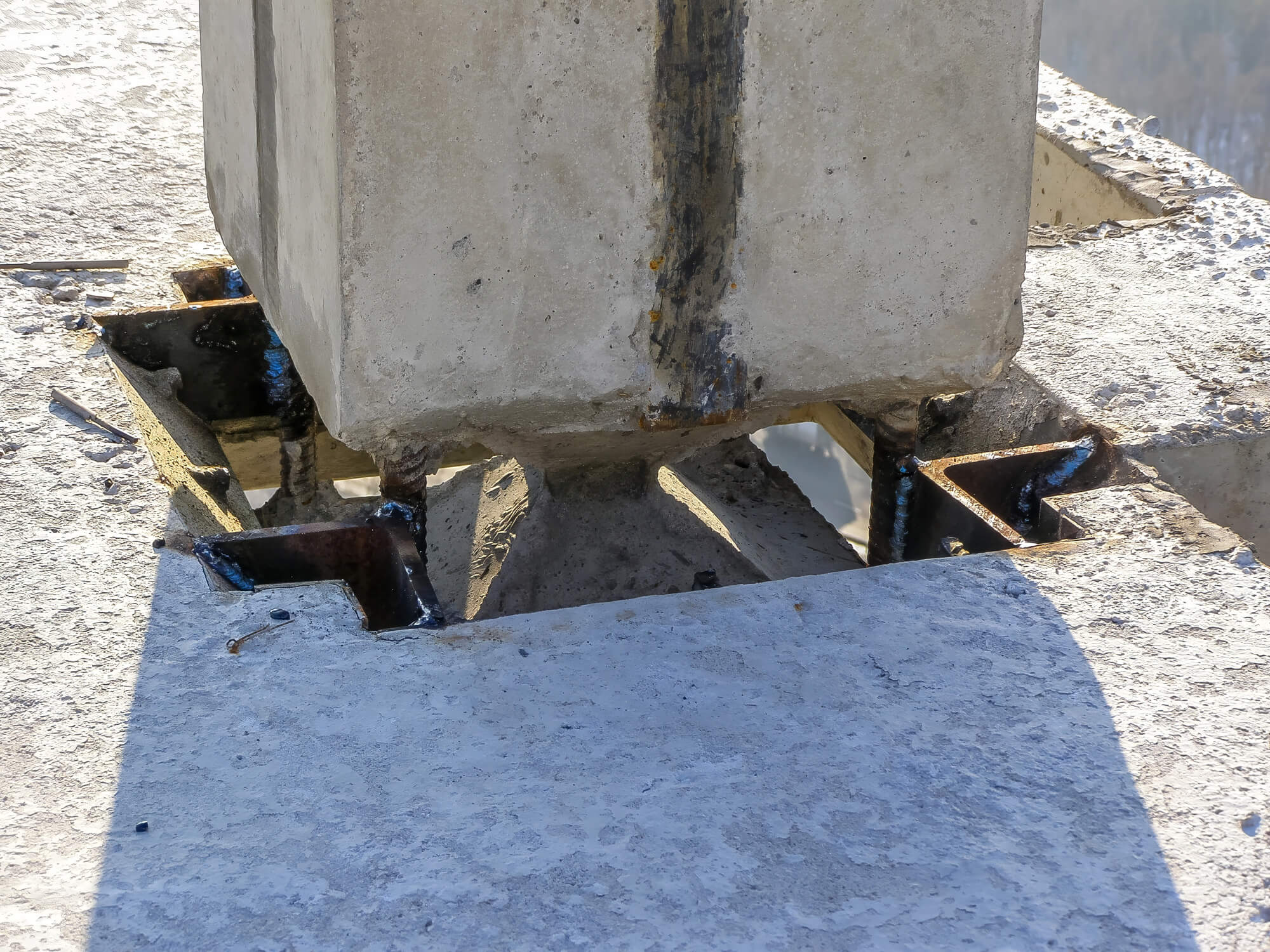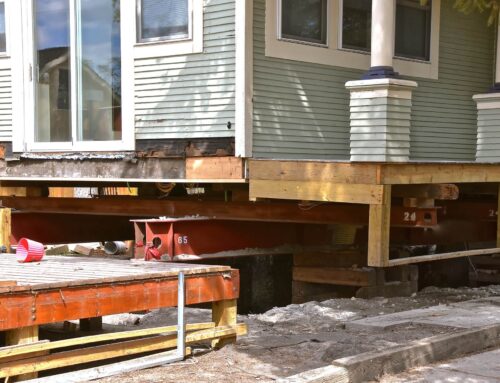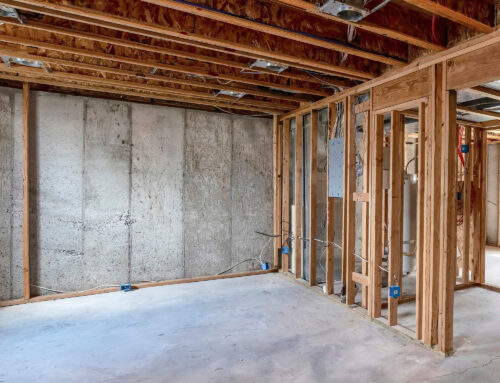Choosing the right type of foundation is one of the most critical decisions in residential construction. In a city like San Antonio, Texas, where expansive clay soils, warm climate patterns, and occasional flooding are part of the environmental conditions, the foundation you select can significantly impact your home’s long-term stability and maintenance requirements.
Among the most common foundation types in this region are slab foundations and pier and beam foundations. Each has its own construction process, benefits, and challenges. Whether you’re building a modern home, planning an addition, or addressing foundation damage in an existing structure, understanding the key differences between a beam foundation and a concrete slab can help you make a confident, cost-effective choice.
So, whether you’re a homeowner trying to assess your floor structure or a builder evaluating which foundation style fits a 1,000- or 2,000-square-foot home, this guide offers expert advice and local context specific to San Antonio’s environmental conditions.
Let’s take a closer look at how these common types of foundations stack up so you can protect your investment, minimize expensive repairs, and ensure a solid foundation for years to come.
What Are Concrete Slab and Pier and Beam Foundations?
When it comes to residential construction, especially in regions like San Antonio with varied soil conditions and warm climate patterns, two of the most common foundation types used are the concrete slab foundation and the pier and beam foundation. Each has its own structure, materials, advantages, and limitations that can influence your home’s performance over time.
Slab Foundation or Concrete Foundation
A slab foundation, also referred to as a monolithic slab or cement slab, is a thick layer of concrete poured directly onto the ground. Reinforced with steel bars, this type of foundation typically includes concrete footings around the perimeter and sometimes additional support through interior grade beams or piers.
Pier and Beam Foundation
The pier and beam foundation, also known as a crawlspace foundation or block and beam foundation, is elevated above the ground using a series of piers (made from concrete, concrete blocks, or cinder blocks) and wooden beams. These piers support the floor joists and allow for a framed floor that sits several inches above ground level, creating a crawl space underneath the house.
Pros and Cons of Slab Foundations vs. Pier and Beam Foundations
Choosing the right foundation type involves weighing the benefits and drawbacks of each based on your home’s size, soil type, climate, and long-term maintenance needs. Below is a detailed breakdown comparing slab foundations and pier and beam foundations across multiple factors.
Slab Foundation Pros
- Lower initial cost: A slab foundation typically costs less to install because it requires fewer materials and less labor. For a 1,000-square-foot home, the concrete costs are generally more affordable than building an elevated beam structure.
- Faster construction: Because the concrete slab is poured directly onto a level surface, construction time is reduced, ideal for builders trying to streamline the construction process.
- Energy efficiency: Homes with slab foundations tend to retain cool air better in warmer climates like San Antonio, reducing energy costs for air conditioning.
- Protection against pests: Without crawl spaces, slab foundations are less vulnerable to pest infestations like termites or rodents.
Slab Foundation Cons
- Limited access to utilities: Since plumbing systems and electrical lines are often embedded within the slab, any access for repairs may require breaking through the concrete slab, leading to costly repair efforts.
- Moisture concerns: In areas with high water tables or poor drainage, visible water or water infiltration can lead to moisture buildup within the home. Slabs without a moisture barrier may be prone to moisture damage over time.
- Cracking and soil movement: Slabs are rigid, so they don’t flex easily with soil movement. In regions with expansive clay soil or soft clay soils, this can lead to cracks in walls, concrete floor damage, or slab foundation fixes being necessary down the line.
Pier and Beam Foundation Pros
- Access for maintenance: The crawl space offers convenient access to pipes, electrical systems, and HVAC units. This means plumbing repairs and inspections are easier and often less invasive.
- Flexibility in unstable soil: Pier and beam foundations adapt more easily to soil movement or can be adjusted if there’s shifting, which is beneficial in San Antonio’s expansive soil conditions. They can reduce the severity of foundation movement.
- Better performance in flooding: Being raised above ground level helps protect beam homes from frequent flooding or moisture intrusion, especially in areas prone to heavy rain.
- Comfort and insulation: Wood floors over crawl spaces may feel softer underfoot and allow for easier installation of insulation or spray foam to maintain comfort.
Pier and Beam Foundation Cons
- Higher installation and maintenance costs: Building a pier and beam house or building involves more labor and materials, including concrete piers, wooden beams, and flooring support. Long-term maintenance is often more frequent and includes pest control, insulation upkeep, and foundation repair.
- Moisture issues in crawl spaces: Without proper maintenance, crawl spaces can develop poor ventilation, leading to moisture damage, wood rot, or musty smells.
- Pest risk: Crawl spaces can attract rodents or insects if not properly sealed or monitored, resulting in additional foundation issues or repairs.
Whether you’re comparing a slab vs pier and beam foundation for a new home or assessing an existing structure, understanding the strengths and weaknesses of each is key to avoiding future structural damage and achieving peace of mind.

How Soil Conditions in San Antonio Affect Foundation Choice
The type of soil beneath your home plays a crucial role in determining the best foundation style, especially in San Antonio, where expansive clay soils dominate much of the region.
Expansive Clay Soil and Its Impact
San Antonio is known for its expansive soil, which swells when wet and shrinks during dry spells. This constant expansion and contraction can lead to soil movement that causes foundation damage over time. Both slab and pier and beam foundations are susceptible, but they respond differently:
- Slab foundations: Concrete slab foundations are rigid and more prone to cracking under pressure from soil shifts. Without consistent soil moisture control, the entire foundation may settle unevenly, leading to visible cracks or structural damage.
- Pier and beam foundations: Beam structures supported by concrete piers can offer more flexibility in unstable soils. Because the foundation doesn’t rest entirely on the ground, there’s room for minor shifts without impacting the entire structure.
Stable vs. Unstable Soil
In areas with more stable, non-expansive soils, a slab foundation may be sufficient and more cost-effective. However, in neighborhoods with documented expansive clay soil or where water table fluctuations are common, homes with pier and beam foundations or even crawlspace stem wall foundations may fare better long term.
Moisture Management Considerations
Both foundation types require careful attention to drainage and moisture control, but in different ways:
- Slab foundations need proper grading, a moisture barrier, and consistent irrigation to prevent soil shrinkage that can cause cracking.
- Pier and beam foundations rely on good ventilation in the crawl space and frequent checks for moisture buildup, which can lead to wood rot, mold, or pest infestations.
Choosing the right foundation for your home isn’t just about construction preferences—it’s about planning for the environmental conditions that can affect your home’s structural integrity over the years. A professional inspection of the soil type, elevation, and drainage patterns is highly recommended before choosing between a slab or beam foundation.

Common Foundation Issues with Slab and Pier and Beam Systems
Every foundation type has its own strengths and vulnerabilities. Whether you own a concrete slab foundation or a pier and beam foundation, knowing the most common issues associated with each can help you catch signs of trouble early and avoid costly repair bills down the road.
Signs of Slab Foundation Issues
Slab foundations, particularly cement slabs or monolithic slab systems, are common in modern construction. While they provide a low-maintenance and cost-effective option for many homeowners, they’re not immune to problems.
Common issues include:
- Cracks in walls or floors – Caused by soil movement under the concrete slab or improper installation during the construction process.
- Foundation movement – Expansive clay soils or inconsistent moisture levels can lead to settlement or shifting of the entire structure.
- Plumbing repairs – Since pipes are often embedded in the concrete slab, any leaks or pipe damage may require excavation or slab repairs.
- Water infiltration – Poor drainage or flooding can lead to moisture intrusion and visible water damage, especially in low-lying areas.
- No crawl space access – Repairs to water utilities, electrical lines, or plumbing systems often require breaking through the concrete, adding additional cost.
These types of foundation issues are often exacerbated in warm climates like San Antonio’s, where dry periods followed by heavy rains cause rapid soil expansion and contraction.
Pier and Beam Foundation Issues
Pier and beam (or crawlspace foundation) homes offer benefits like better ventilation and easier access for repairs, but they also come with their own set of risks.
Typical problems with pier and beam foundations include:
- Wood rot and mold – Wooden beams and floor joists can decay due to moisture buildup, especially without proper ventilation or insulation.
- Bouncy or uneven floors – A common issue in older pier and beam homes or homes lacking proper beam construction support.
- Pest infestations – Crawl spaces are prime areas for rodents, termites, and other pests if not sealed and maintained regularly.
- Structural damage – Poor soil conditions, water damage, or aging components like cinder blocks or concrete piers can lead to foundation settlement or collapse.
- Access issues – While access to plumbing and utilities is easier, frequent maintenance may be needed to preserve the foundation’s structural integrity.
Signs of Potential Issues with Foundation
Regular inspections are essential to both types of foundations. Homeowners should watch for:
- Visible cracks: Look for these as potential indicators of foundation movement or damage.
- Musty smell: Could signify moisture issues affecting the foundation or crawl space.
- Squeaky floors: A possible result of shifting or compromised structural support.
- Changes in door or window alignment: Misalignment can indicate foundation settlement or movement. Look for gaps in both doors and windows that can’t be explained by the frames or hinges.

Repair Methods for Slab vs. Pier and Beam Foundations
When foundation issues arise, the appropriate repair method depends largely on the type of foundation your home has. Both slab foundations and pier and beam systems require different techniques, tools, and levels of accessibility to correct damage efficiently and restore structural stability.
Repairing Slab Foundations
Slab foundation repairs can be complex, largely due to the difficulty in accessing pipes, plumbing systems, or structural foundation walls beneath the concrete. The most common slab repairs include:
- Slab jacking (mudjacking or foam injection): Used to raise sunken areas of the concrete slab by injecting materials beneath the surface.
- Pier installation: Concrete piers or steel piers may be driven deep into the soil to stabilize the foundation and correct sinking or shifting.
- Crack sealing and epoxy injections: Help repair minor cracks in the concrete floor or foundation wall, sealing out moisture and preventing further damage.
- Plumbing access and repair: If slab leaks occur, sections of the slab may need to be cut open to access the plumbing, a process that adds additional cost.
- Moisture management: Installing a moisture barrier around the foundation or improving drainage can help prevent water infiltration and soil movement.
These methods are especially important in areas like San Antonio, where expansive clay soil and fluctuating moisture levels can lead to rapid foundation movement and visible cracks.
Repairing Pier and Beam Foundations
Homes with pier and beam foundations benefit from crawl space access, which allows for easier repair solutions, though maintenance may be required more frequently.
- Shimming and re-leveling: One of the most common pier beam repairs involves adding shims to level sagging or uneven floors.
- Pier replacement or reinforcement: Aging or damaged piers (wood, cinder block, or concrete) can be replaced or reinforced to restore the integrity of the floor structure.
- Wood replacement: Rotten or termite-damaged wood beams and floor joists may need to be swapped out to eliminate safety risks.
- Drainage improvements: Installing French drains or improving grading can reduce water pooling and moisture issues in the crawl space.
- Encapsulation and insulation: Using spray foam insulation or installing vapor barriers helps protect against poor ventilation, mold, and energy loss.
In both foundation styles, a professional inspection is the first step toward identifying the right solution.
Whether you’re dealing with a beam versus slab foundations situation or unsure of the full scope of the damage, expert advice from a qualified foundation repair company can help avoid future complications or costly repairs.
Long-Term Considerations for San Antonio Homes
Choosing the right foundation type for a home in San Antonio is a decision that affects future maintenance, energy costs, structural performance, and repair accessibility for decades.
Climate and Soil Conditions
San Antonio is known for its expansive clay soil, warm climate, and occasional flooding during heavy rainstorms. These environmental conditions create unique challenges for both slab and pier and beam foundations:
- Slab foundations are more vulnerable to soil movement and foundation cracking when the soil dries and shrinks or expands with moisture. Without a consistent moisture barrier and proper drainage, this type of foundation can experience serious shifts and water infiltration.
- Pier and beam foundations, while more adaptable to soil fluctuations, must be protected from moisture buildup, wood rot, and pest infestations in the crawl space. This type of foundation benefits from better airflow and access for maintenance but requires ongoing checks for moisture, especially in wetter months.
Access to Utilities and Repairs
- Slab homes typically make plumbing repairs or accessing electrical systems more difficult, as all pipes and lines are embedded in the concrete. When problems arise, repair work may involve excavation or slab cutting.
- Pier and beam homes, in contrast, offer access to pipes, electrical lines, and floor joists via the crawl space, which can simplify repairs and lower long-term repair costs.
Maintenance and Energy Efficiency
- Slab foundations generally require less frequent maintenance, but issues tend to be more expensive when they arise. The concrete also serves as a thermal mass, which can help regulate indoor temperatures in warm climates, but may lack sufficient insulation in colder climates.
- Pier and beam systems may have higher energy costs without proper insulation, but spray foam insulation, vapor barriers, and regular inspections can mitigate these problems.
Resale Value and Structural Longevity
For a 2,000-square-foot house in San Antonio, the choice between slab and pier and beam may also impact resale value and peace of mind for future buyers:
- Slab foundations are typically favored for modern homes and residential construction, appealing to buyers seeking lower maintenance and newer materials.
- Pier and beam homes may appeal to those valuing easy access, traditional construction, and homes with framed floors or historic charm.
Whether you’re evaluating a 1,000-square-foot home footprint or planning for a multi-story build, the foundation type should be matched to soil type, future utility access, and expected environmental stressors.
When to Call an Xpert Foundation Expert
Whether your home has a slab foundation, pier and beam foundation, or another configuration, it’s essential to stay alert for any of the signs of trouble we listed above and schedule professional assessments at the first sign of damage.
Ignoring early indicators of foundation problems can lead to costly repairs, affect the structural integrity of the entire structure, and compromise your safety.
Benefits of Early Professional Inspection
A professional inspection can determine the extent of any foundation damage and help you avoid unnecessary repairs. Experts can also assess whether your type of foundation is responding well to the soil conditions in your area and recommend preventive maintenance steps like:
- Slab foundation repairs (leveling, sealing cracks, addressing drainage issues)
- Pier and beam repairs (replacing or reinforcing wooden beams, correcting beam structures, stabilizing concrete piers or cinder blocks)
- Evaluation of moisture barriers, plumbing systems, and signs of moisture intrusion or pest infestations
- Recommendations for protecting against frequent flooding or rising water tables in high-risk neighborhoods
For San Antonio homes, especially those built on expansive soil or subject to frequent flooding, partnering with a trusted foundation repair expert like Xpert Foundation Repair offers peace of mind and long-term savings.
Our team offers foundation evaluations, targeted repairs, and guidance tailored to local soil types, climate, and foundation styles.
The Xperts can Help With Any Foundation
Deciding between a slab foundation and a pier and beam foundation depends on several key factors: soil type, climate, maintenance needs, and how you plan to use your home.
If you’re weighing your options or noticing foundation issues, contact Xpert Foundation Repair. Our San Antonio-based experts can guide you toward the right solution and help ensure your home rests on a strong, stable foundation.










